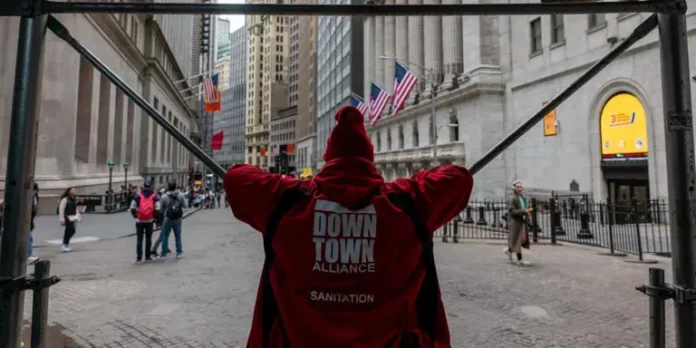Roughly $11.1 trillion has been wiped away from the U.S. stock market since Jan. 17, the Friday before President Donald Trump took the oath of office and began his second term, according to data from Dow Jones Market Data.
Some $6.6 trillion of that figure has occurred on Thursday and Friday alone, the largest two-day wipeout of shareholder value on record, Dow Jones data showed.
Many investors were caught flat-footed on Wednesday when Trump unveiled tariffs that were much larger than expected.
Financial markets have since been heaping pressure on the administration to step in and pare back the planned levies or to announce meaningful progress toward a deal, on Friday, said Kathleen Brooks, research director at XTB, in emailed commentary.
President Trump earlier in the session touted a productive phone call with the leader of Vietnam in a post on Truth Social. Shares of Nike Inc. which has a heavy factory presence in Vietnam, jumped, but the post didn’t meaningfully stanch the bleeding in the broader market.
Recession risks remained front-and-center Friday. Even a stronger-than-expected March jobs report wasn’t enough to lift investors’ mood.
As the weekend approached, fears were focused on a trade-war escalation, where “the U.S. doesn’t back down,” said Jay Woods, chief market strategist at Freedom Capital markets, in comments shared with MarketWatch via email. “If we are to punch back, you could have damaging effects to not only the tech sector, but the economy overall. This could throw us into a recession and could end the bull market as we know it.”
By the time the market closed on Friday, the S&P 500 had surpassed its losses from the first 75 days of George W Bush’s first term in office, the last time stocks saw comparable declines during the early days of a new administration. The Russell 2000 has seen the rockiest start to a new administration on record, FactSet data showed.
The Dow Jones Industrial Average has fallen by 11.9% since Inauguration Day, while the S&P 500 was down 15.4% as of Friday’s close.
While the Nasdaq hit a record closing high of 20,056.25 on Feb. 19, it has since fallen more than 22% since then, FactSet data showed. The tech-heavy index joined the Russell 2000 in bear-market territory as of Friday’s close.
The small-cap-focused Russell 2000 has dropped more than 25% since hitting a record closing high of 2,442.03 on Nov. 25.
U.S. stocks tallied their biggest weekly drop since March 2020 on Friday.
Weakness during the early days of a new president’s term isn’t unusual, although the degree to which stocks have been punished this time around is certainly extreme.
According to Carson Group’s Ryan Detrick, stocks tend to do much better in years three and four, while performance during the first quarter of year one tends to be particularly tepid.
Source| Market Watch

